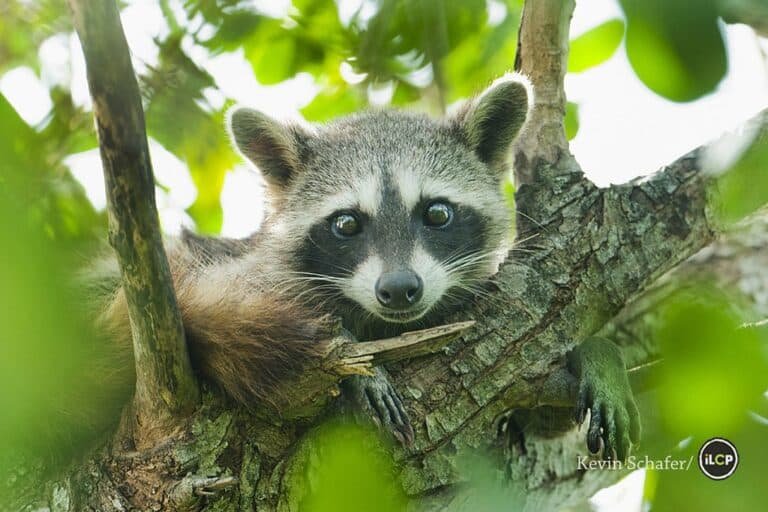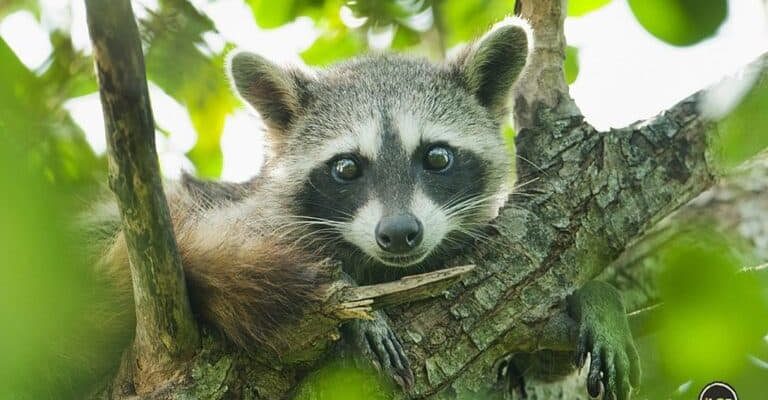
Let’s think of raccoons like the occasional house guest. Just because they’re around and causing a bit of mischief doesn’t mean they have it easy. They face numerous challenges, from habitat loss to climate change. So, what’s the real scoop on their future? Come along as we dig into the world of raccoons and explore their conservation status and the efforts being made to protect them globally.
Understanding Raccoon Populations
Raccoons are common across many parts of North America, adaptable to various environments. You’ll find them in forests, mountains, urban areas, and even wetlands. Their ability to thrive in diverse habitats is impressive. In fact, their *generalist* nature allows them to find food and shelter in places many other animals can’t.
However, adaptation doesn’t shield them from threats. While raccoons are not endangered, their populations can fluctuate due to factors like disease, food availability, and environmental changes. For example, raccoons can carry rabies, which poses a danger not just to them but to pets and humans. Keeping an eye on raccoon populations helps conservationists understand how healthy their numbers are and what action, if any, may be necessary.
Threats to Raccoon Survival
You might be surprised to learn that raccoons face several threats even though they are not endangered. Here are some key challenges they encounter:
- Habitat Loss: As cities expand and forests are cleared for agriculture, raccoons lose their homes. This loss can lead to more encounters with humans, which is not always a good thing for either party.
- Pollution: Raccoons often forage in urban environments, exposing them to pollutants like chemicals and trash. This can lead to health issues and decreased survival rates.
- Climate Change: Changes in weather patterns can affect food sources. Raccoons rely on various foods like fruits and small animals, and when those resources become scarce, their populations can suffer.
By understanding these threats, we can appreciate how human activities can impact even the most adaptable species. It’s almost like we’re all living in the same neighborhood, and what we do can affect everyone, including those adorable masked critters!
Current Conservation Status of Raccoons
Globally, raccoons are considered to be of Least Concern according to the IUCN (International Union for Conservation of Nature). This essentially means that, for now, their populations are stable and not facing immediate extinction. However, it’s crucial to note that this status can change if conditions worsen.
In North America, raccoon populations are largely healthy, but localized declines can occur. For instance, if a disease outbreak strikes an area, or if a specific habitat is decimated, the local raccoon population might take a hit. Local conservation efforts often aim to monitor and protect raccoon habitats to ensure their overall well-being.
Conservation Efforts and Strategies
You might be curious about what is being done to protect raccoons. Conservationists work on various fronts to help balance human-raccoon interactions and ensure raccoons can thrive:
1. Habitat Restoration: Efforts to restore natural habitats can provide raccoons with the cover and resources they need. This can include planting native vegetation and cleaning up polluted areas.
2. Public Awareness: Educating communities on how to coexist with raccoons can reduce negative interactions. This includes securing trash cans and understanding raccoon behavior.
3. Research and Monitoring: Scientists study raccoon populations to gather data on health, numbers, and behavior. This research is vital for making informed conservation decisions.
By focusing on these strategies, conservationists aim to maintain a delicate balance, allowing raccoons to flourish while minimizing conflicts with humans.
The Role of Raccoons in the Ecosystem
Raccoons might seem like mischievous troublemakers, but they play a significant role in their ecosystems. As omnivores, they help in seed dispersal and contribute to pest control. By munching on insects and small animals, raccoons assist in keeping these populations in check, which helps ensure that ecosystems remain balanced.
Furthermore, their foraging habits aid in soil aeration. When they dig through the ground searching for food, they disturb the soil, promoting nutrient mixing and enhancing plant growth. So, while they might be cute and cuddly, raccoons are also essential players in their habitats!
How You Can Help Raccoons
If you’re looking to support raccoon conservation, there are several simple actions you can take. You don’t need to be a wildlife expert to make a difference. Here are some ways you can help:
- Support Local Conservation Groups: Consider donating to or volunteering with organizations that focus on wildlife conservation and habitat restoration.
- Encourage Responsible Waste Management: Keep your trash secured to minimize attractants for raccoons and other wildlife.
- Educate Others: Share what you learn about raccoon conservation with friends and family to raise awareness. The more people understand, the better the outcome for raccoons!
Every little effort counts, and together we can ensure these lovable critters continue to thrive in their natural environments.
So, is the raccoon endangered? In short, no. Their populations are currently stable globally, but ongoing threats mean that careful attention is necessary. By understanding the challenges they face and the roles they play in our ecosystems, we can appreciate these clever creatures even more.
With the right conservation efforts and public awareness, we can create habitats that support raccoons and allow them to coexist peacefully with us. Remember, even if they like to raid your trash bins now and then, these masked bandits deserve a place on our planet. Together, we can make sure that future generations will still be able to enjoy the quirky antics of raccoons for years to come!

